Despite the slowdown in the development of the Chinese market and the decline in sales in Pakistan due to the challenging trading environment, Asia, Africa and Africa as a whole maintained stable growth.
Editor’s note: This article comes from WeChat public account “小食 代” (ID: foodinc) , Author He Danlin, reproduced with permission.
Nearly, Nestlé, the world’s largest food company, released its full-year financial report for 2019. Nestlé’s CEO also talked about the impact of the outbreak on the business and responded to questions such as whether to continue to hold the silver heron business.
The financial report read by Snack Foods shows that in 2019, Nestlé’s organic growth was 3.5%, of which the actual internal growth reached 2.9%, “the highest level in the past six years”, while pricing contributed 0.6%. The company noted in its earnings report that the growth was driven by the strong momentum in the US market and Purina’s global performance in pet food.
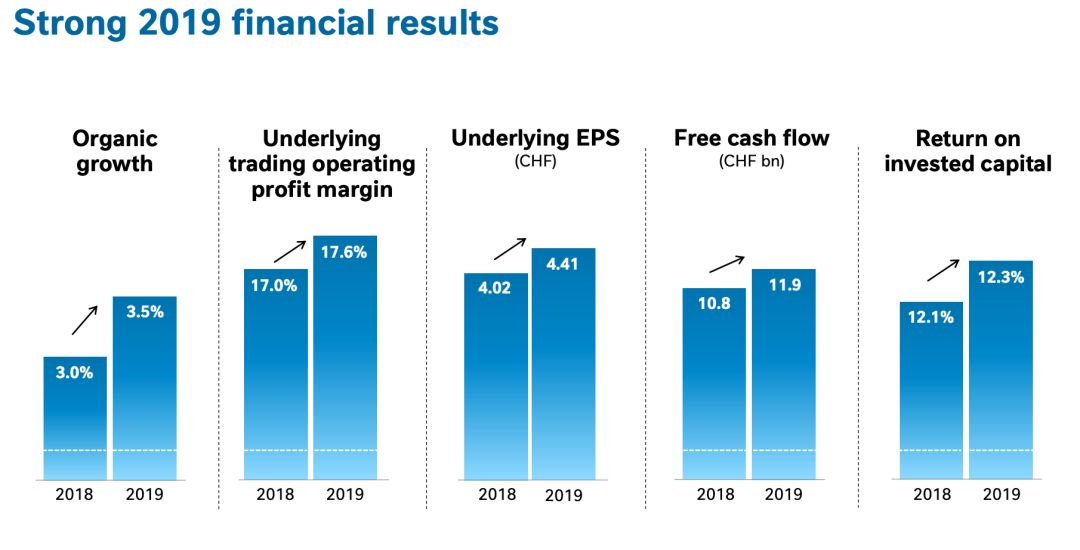
The latest financial report data shows that in 2019, Nestlé’s total sales increased by 1.2% to 92.6 billion Swiss francs (equivalent to approximately 661.96 billion yuan, compared with 91.4 billion Swiss francs in 2018). Net acquisitions had a negative impact of 0.8%, and adverse foreign exchange factors caused a 1.5% decline in sales.
Chinese market
Let’s focus on the performance of the Chinese market.
From the perspective of revenue, the performance data reviewed by Snack Foods shows that in 2019, Nestle Greater China’s sales revenue was 6.913 billion Swiss francs, equivalent to approximately RMB 48.121 billion (based on the exchange rate disclosed by Nestlé, 100 yuan in 2019) Exchange for 14.366 Swiss francs, and 14.776 in 2018). In 2018, Nestlé Greater China’s revenue was 7.004 billion Swiss francs, equivalent to approximately 47.4 billion yuan.
This means that in terms of Renminbi, Nestlé Greater China will receive 700 million yuan more in 2019 than in 2018, or an increase of 1.48% year-on-year.

From the perspective of organic growth, Snack Foods noticed that Nestlé pointed out in its financial report that in 2019, organic growth in the Chinese market “slightly improved” year-on-year, actual internal growth was flat, and pricing increased. Snack Generation has introduced that organic growth of Nestlé Greater China in 2018 was 5%, compared to 1.6% in 2017.
In terms of categories, Nestle pointed out that the condiment, coffee and ice cream businesses in the Chinese market performed well. China ’s infant nutrition business achieved “slight growth” as Qifu ’s strong sales momentum was offset by the performance of the S-26 series, while sales of Yinlu peanut milk and Babao porridge declined.
“The Chinese market achieved a small increase, mainly because the Lunar New Year brought some pull to the fourth quarter.” Nestle said.

“Despite the slowing momentum of the Chinese market and the decline in sales of Pakistan due to the challenging trading environment, Asia, Africa and Africa as a whole have maintained stable growth.” Nestle said that organic growth in developed markets has accelerated to 2.6%, while organic growth in emerging markets remained essentially unchanged at 4.7%.
In Asia, Africa and Africa, by category, the biggest growth contributors to the region are condiments, baby nutrition and Purina Pet Food. “Infant nutrition has maintained a single-digit growth, with the exception of the S-26 series in China, which has maintained a good growth momentum in all markets,” Nestle said.
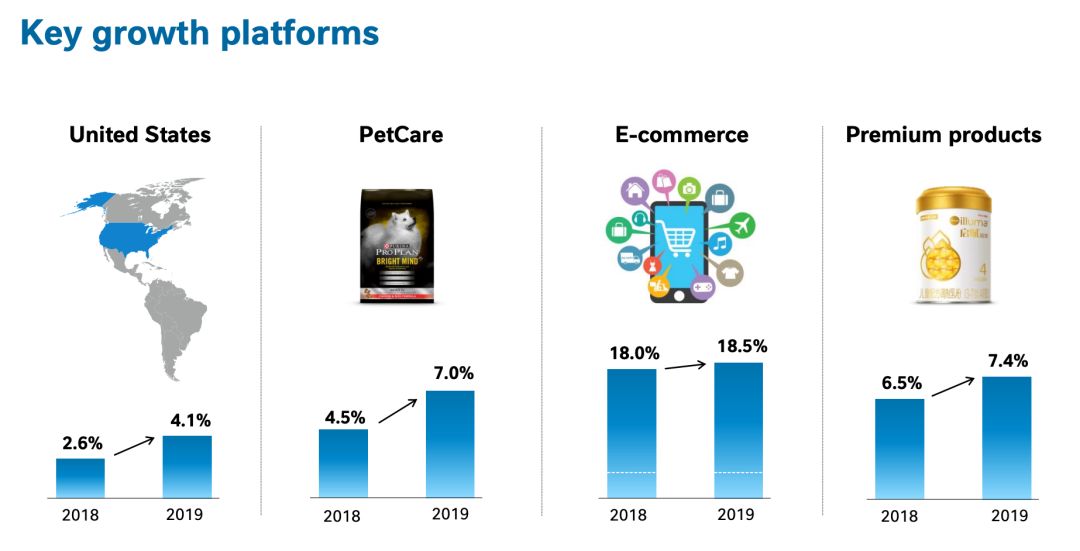
Yinlu business
Snacks noticed that the impairment of Nestlé in 2019 is mainly related to Asia, Africa and Africa, and it is also related to Yinlu’s peanut milk and porridge business.
Nestle said today that due to the poor performance of these businesses including the Mid-Autumn Festival Yinlu in the second half of last year and the fierce competition environment, the company’sYinlu’s strategy, product portfolio, and business plan were reviewed and impaired accordingly.
The Snack Generation noticed that just now, in response to a question from a foreign media about whether Nestlé will continue to hold Yinlu, Nestlé CEO Mark Schneider said that Nestlé has frankly stated Yinlu brought pressure on performance last year, mainly from the category of peanut milk and porridge. Although Yinlu’s related business has a stable momentum, it still needs a lot of work. At present, he has nothing else to do. Announced matters.

Yinlu CEO Sun Yinong
This latest comment seems to indicate that Nestle is still working to repair the silver heron. Snack Generation
Yinlu ’s official website also quoted Sun Yinong as saying in the end of January that 2019 is a year full of hardships, and encountered some difficulties in the process, but we are a fast-responding team, and we made timely adjustments and made innovations. In the future, the company will focus on the market and consumers, strengthen internal cohesion, enhance the personal capabilities of employees, and discover more motivation and passion. Yinlu will definitely go better and faster.
Effect of the epidemic
Today, Schneider said that the spread of the new crown virus in the past few weeks has made the Nestlé China team a tremendous effort. “Our focus is to make sure IThe safety of our employees and their families and the introduction of protective measures in all our workplaces. “He said.
“Relevant Chinese authorities are taking measures to curb this infectious disease, and we are working closely with them based on our rich local experience and expertise.” Schneider said, “The first things we think of are those People directly affected by this global health emergency. We stand with the Chinese people and are working to ensure that our nutritious food and beverages continue to be available on a large scale, especially for the most vulnerable people, infants and young children and Products for the elderly. “
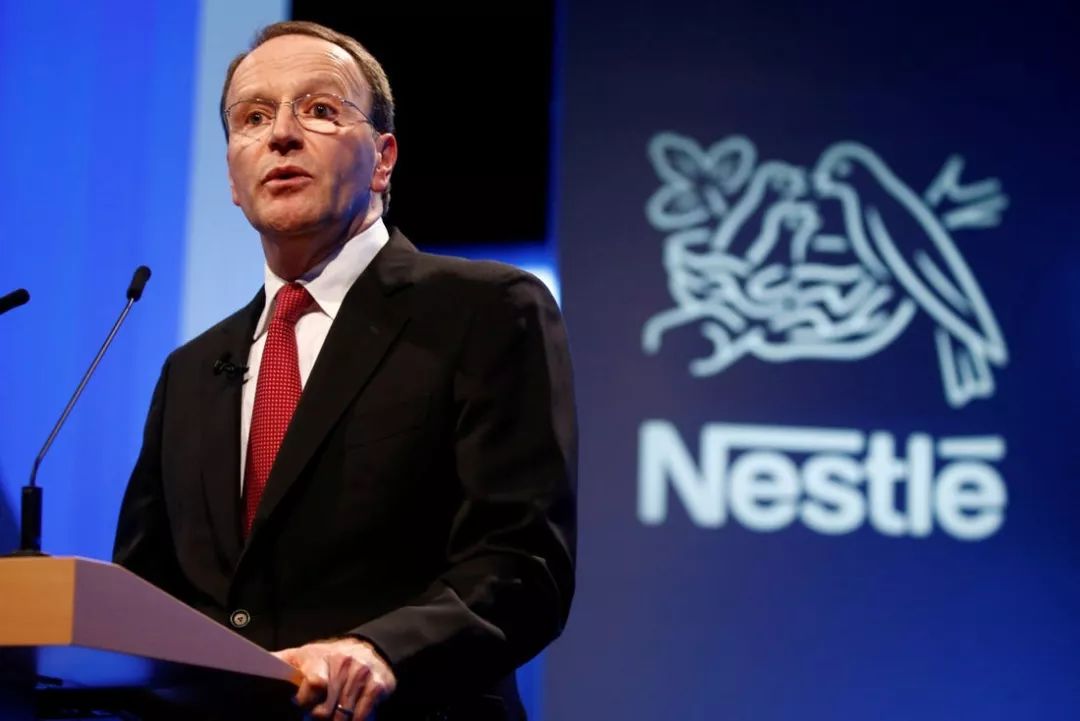
Nestle CEO Mark Schneider
He pointed out that Greater China is the second largest market for Nestlé, accounting for about 8% of global sales. “It’s too early to quantify the financial impact of this outbreak,” he said.
Snacks noticed that today, Bloomberg quoted Schneider as saying in an interview that Nestlé needs an additional 1-2 years to restore global sales revenue growth to the level of 4% -6%. He said that according to the current situation of February (note: referring to the impact of the new crown epidemic), “we cannot easily say that the 4% growth rate can be achieved.”
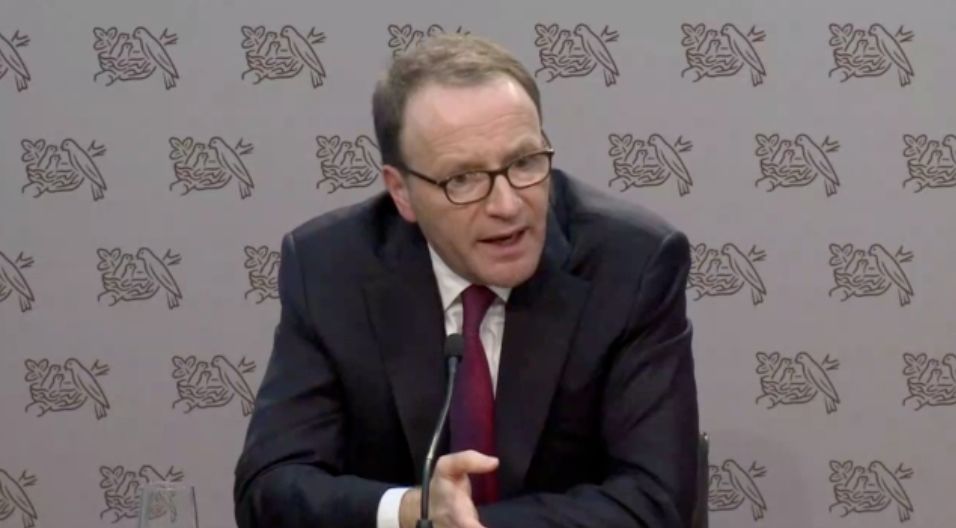
Nestle CEO Mark Schneider
According to reports, Nestlé currently has 31 factories in China, most of which have resumed work this week, but production capacity has yet to be fully restored. Nestle China told the snack shop on Monday that since February 10, most of Nestlé’s locations have begun to resume work in an orderly manner. During the epidemic, a lot of work has been completed through the form of telecommuting of employees to ensure the company’s operation.
“We have adopted measures such as temperature measurement, mask distribution, and regular disinfection to ensure orderly and safe return to work.” The company said that in terms of business, ZhengquanWe strive to ensure the safe production of our products; at the same time, logistics are also being restored. “In the next time, we will continue to actively cooperate with local governments and relevant departments to carry out epidemic prevention work and timely adjust the company’s operations according to the development of the epidemic situation.”
External power analysis
Bloomberg also today pointed out that the assets acquired and sold by Nestle in the past three years accounted for 12% of total sales revenue in 2017. Schneider today expects similar scale over the next three years.
The Financial Times said today that Nestlé achieved its set profit margin target one year in advance by cutting costs and improving profitability by selling part of its business. It is reported that Schneider is advancing a three-year recovery plan. He pointed out today that Nestlé will adapt to the rapidly changing industrial environment and changing consumer preferences to prepare its product portfolio for high growth.
The report said that since becoming Nestlé CEO 3 years ago, Schneider has faced pressure from radical investors, and Nestlé has also handled a lot of assets. Currently, most investors welcome Nestlé’s divestiture and acquisition, which has caused Nestle’s stock price to rise 46% after Schneider took office.
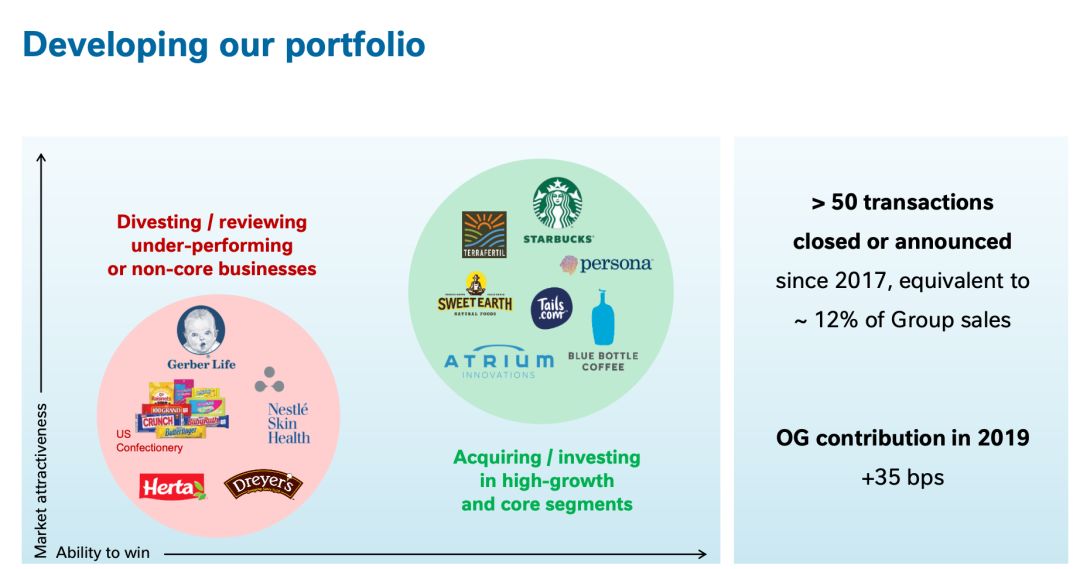
Snack Food has introduced that in 2018, Nestlé’s acquisition and business sale transactions were worth 14 billion Swiss francs. In 2019, Nestlé also concluded multiple transactions, including the divestiture of Nestlé Skin Health, and sold its US ice cream business to Froneri for $ 4 billion (the transaction was completed on January 31, 2020). Announced the sale of a 60% stake in cold-cut meat brand Herta to Casa Tarradellas.
“In 2019, we have made significant progress in transforming our portfolio. We have done what we said to do and do more than that. We haven’t finished yet.” Schneider said today, 2020 In 2011, organic sales are expected to continue to grow as Nestlé takes further steps to “decisively address the problems of underperforming businesses”.
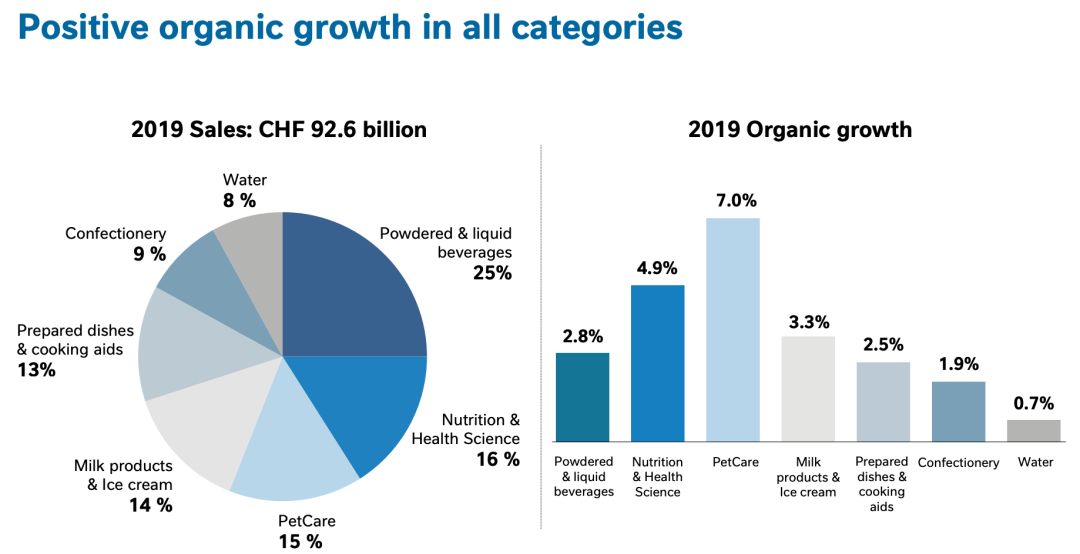
In fact, in the first two months of 2020, Nestlé has “attacked twice”, all concentrated in the field of medical nutrition.
Snack Foods introduced that on January 27, the company announced that it had reached its first acquisition this year: the acquisition of Allergan (a multinational pharmaceutical company based in Dublin, Ireland) to expand Nestlé Nutrition business and complements its therapeutic product portfolio.
At the time, Reuters commented that Nestlé CEO Schneider is increasing investment in medical nutrition because the business combines medicine and food, and its field has a faster growth rate than traditional mainstream foods.
Nearly 5 February, Nestlé Health Sciences announced that it will make a further US $ 200 million equity investment in California-based biopharmaceutical company Aimmune Therapeutics. At present, Nestlé Health Sciences’ total investment in this company known as the “anti-allergy market disruptor” has reached 473 million US dollars, and its shareholding is 25.6%.
Today, Schneider said in response to a question that he would not rule out a large acquisition in the field of medical nutrition.